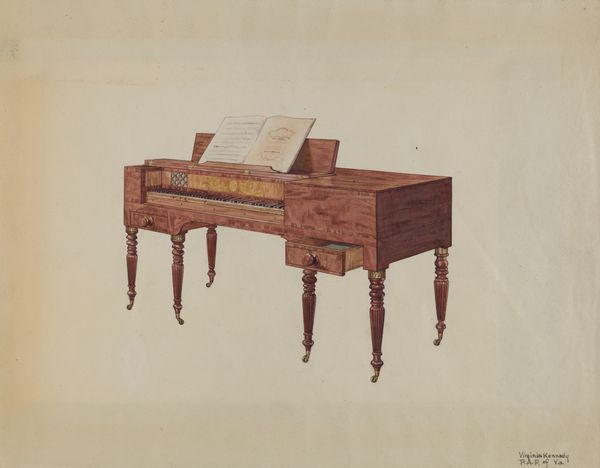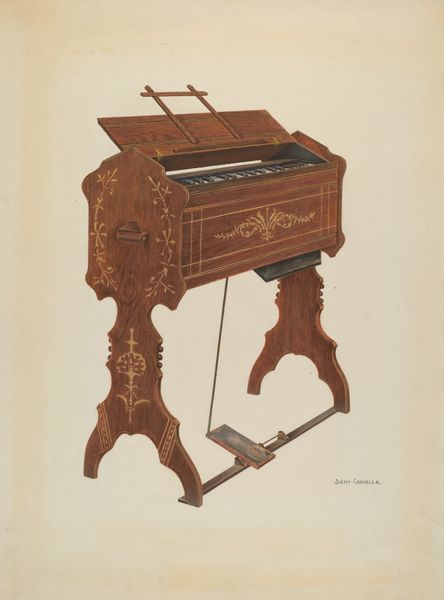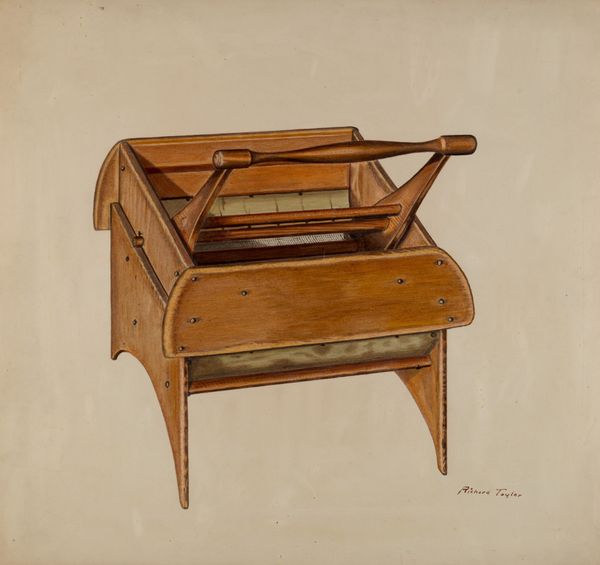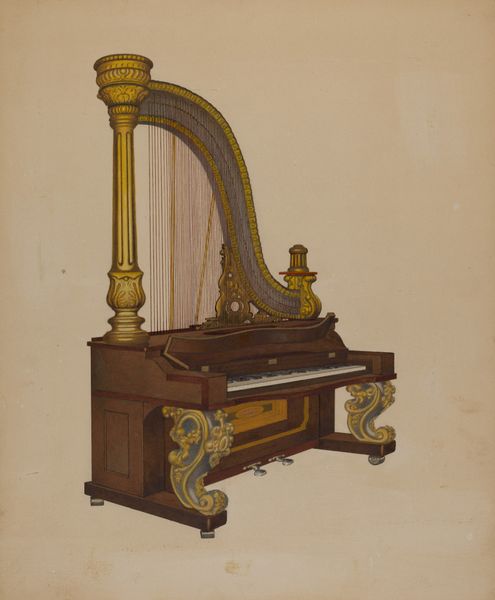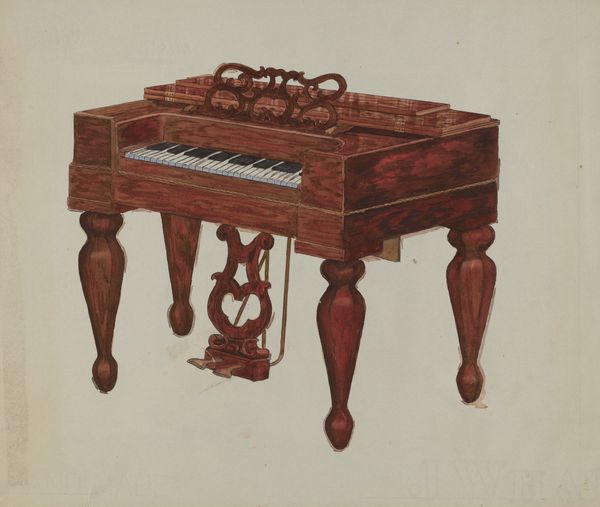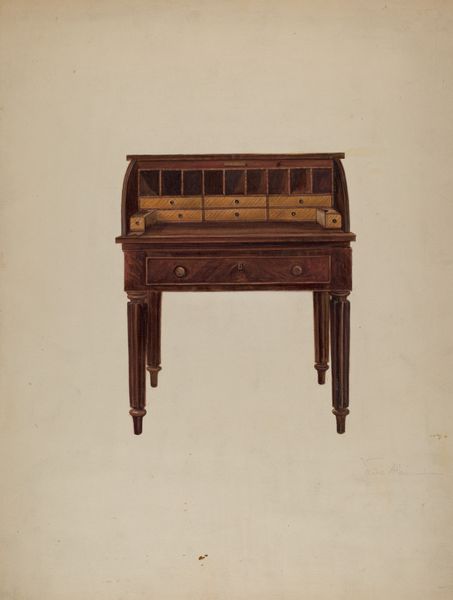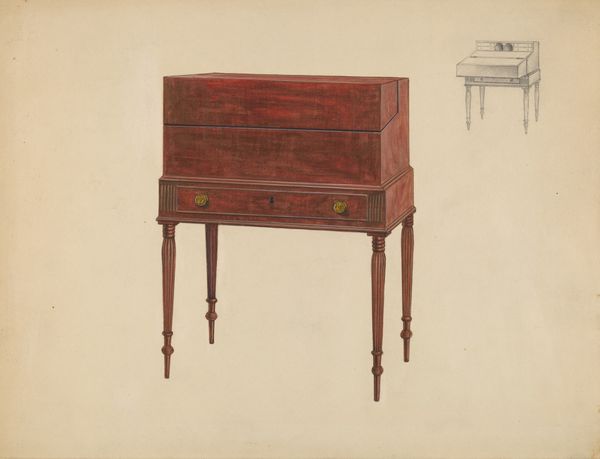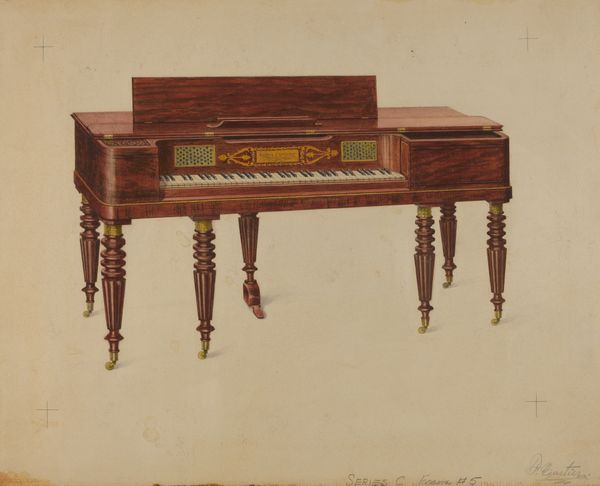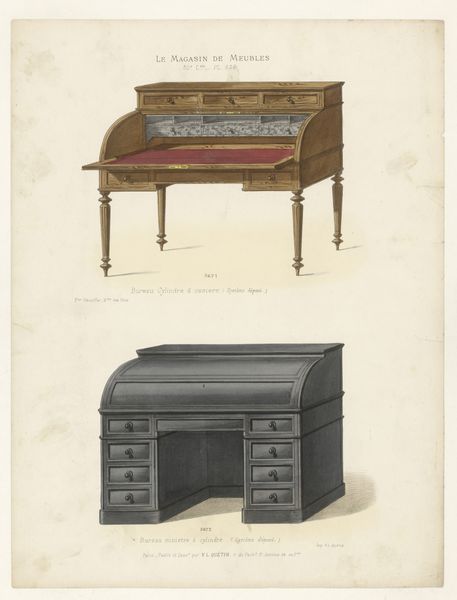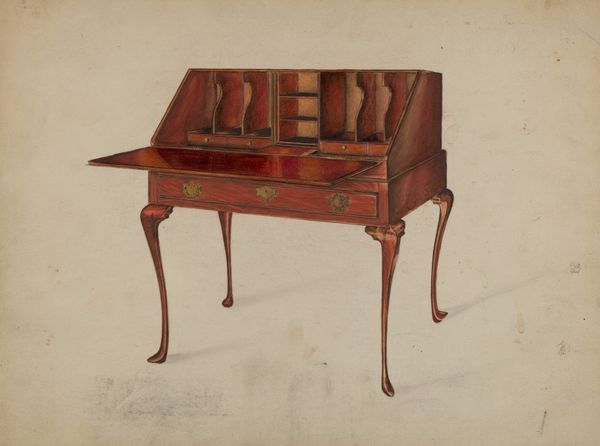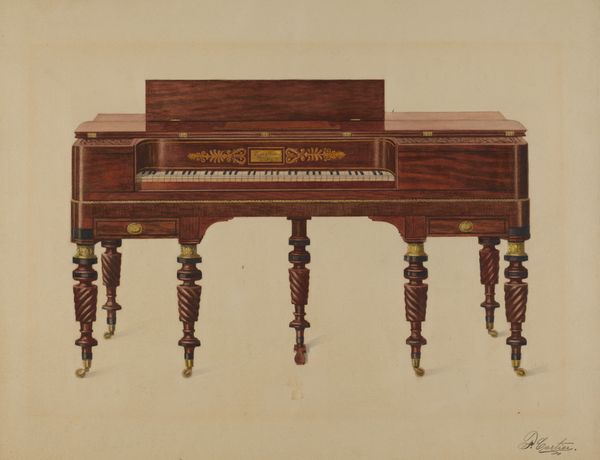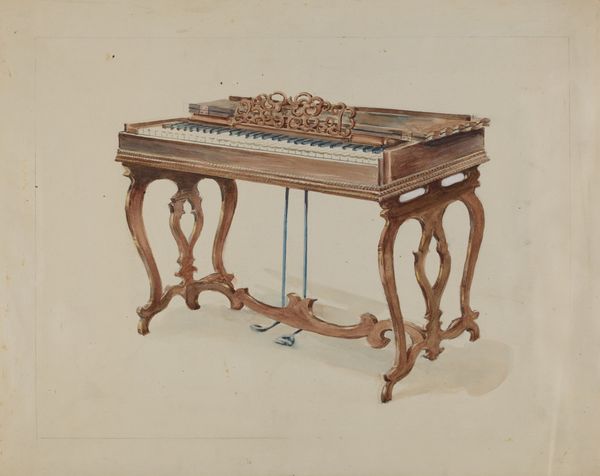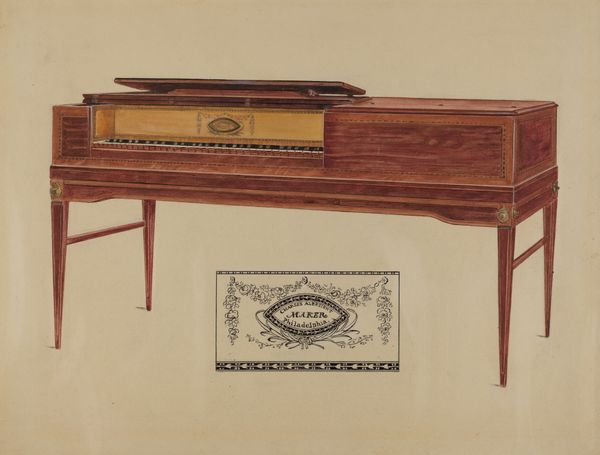
drawing, watercolor
#
drawing
#
watercolor
#
watercolour illustration
Dimensions: overall: 30.5 x 22.7 cm (12 x 8 15/16 in.) Original IAD Object: 28 3/4" high; 35 5/8" wide; 22 7/8" deep
Copyright: National Gallery of Art: CC0 1.0
Editor: Here we have George Loughridge's "Roll-Top Desk," created around 1953, rendered in watercolor and drawing. The details feel so precise. What strikes me is the way it idealizes a space of work and perhaps domestic life...What do you see in this piece from a historical perspective? Curator: It's interesting you say idealizes. This piece resonates with the post-World War II period when there was an enormous desire for order and efficiency in both home and work spaces. But consider the desk itself; it's presented almost devoid of context. There is no indication who might own it. Editor: That's a great point. It really is just the desk itself. Is it the focus on consumer goods starting to be emphasized at the time? Curator: Precisely! Loughridge might be depicting the aspiration, but perhaps also commenting on the increasing commodification of even our most intimate spaces. Consider how advertising at this time began focusing not just on needs, but on desires, on the performative aspect of possessions. Are we looking at an item, or a symbol of something else? Editor: So, this rendering might be hinting at the way domestic spaces were becoming stages for a sort of performance? Like you purchase a lifestyle in buying the desk? Curator: Exactly. The clean lines and organized compartments speak to this need for control and efficiency that might be less about function, and more about presenting an image of success. Think about how furniture design influences social behavior and identity during this time. Do you feel like that helps broaden your understanding of the piece? Editor: Absolutely. It shifts my thinking from purely aesthetic appreciation to thinking about how culture influences both art and our own self-perception through objects. Curator: And hopefully helps reveal how art is a mirror reflecting not just an object, but society itself.
Comments
No comments
Be the first to comment and join the conversation on the ultimate creative platform.
